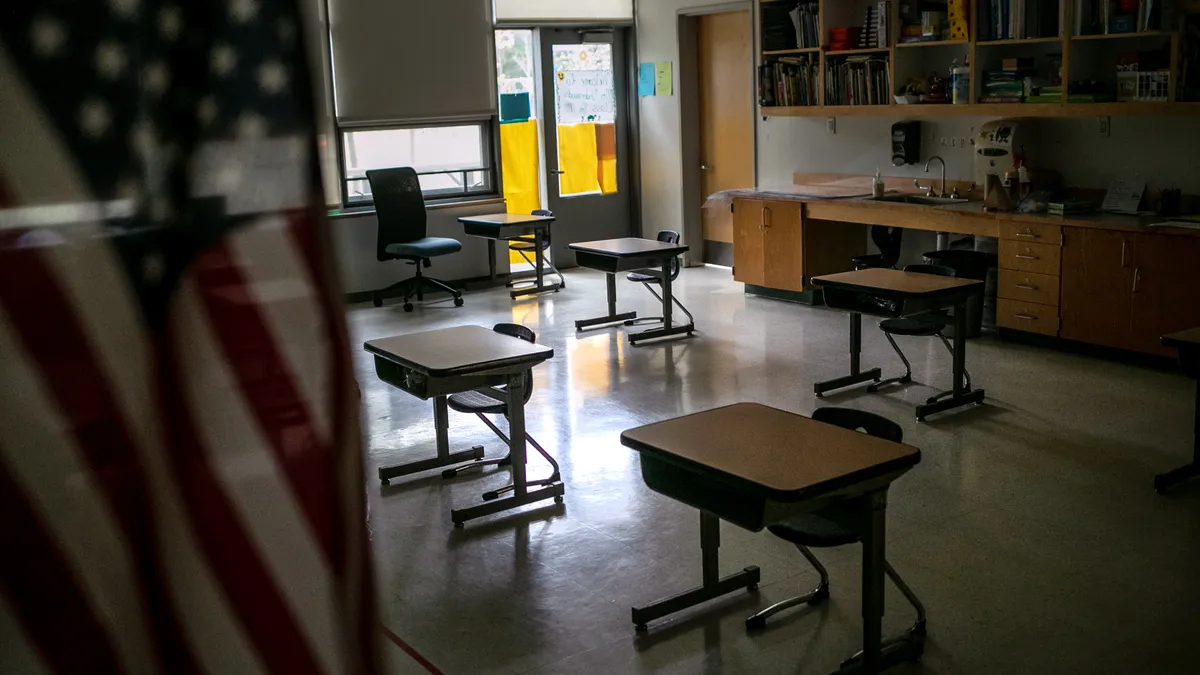Schools can fix persistently racially segregated K-12 schools by changing attendance boundaries, and even small shifts in boundaries between neighboring schools and districts can make large impacts, according to a report released Tuesday by Urban Institute, a nonprofit research organization.
Explicit efforts to create school boundaries based on race and with the intention of making school enrollments more diverse can reduce inequality between schools not only in racial, ethnic and socioeconomic characteristics, but also in regard to staffing, academic programming, student discipline rates and student achievement, the report said.
Although redrawing school attendance zones can be one of the most contentious undertakings in school communities, there should no longer be any excuses, said Tomás Monarrez, the report’s author and a labor economist at Urban Institute.
In fact, Monarrez added, failure to do so in egregious cases may mean a school is in violation of the Equal Educational Opportunity Act of 1974, which prohibits intentional segregation of schools.
“It's really not so much policymakers' intention to make these racist lines, but it has been their failure to change the school boundaries,” Monarrez said. “They have all the power to change it.”
Where school boundaries are segregated
The unequal racial divisions among attendance zones in neighboring schools and districts is not just the legacy of decisions made decades ago, before the U.S. Supreme Court ruled racial segregation in schools was unconstitutional; those practices continue to happen now.
The report points to the John R. Lewis Elementary School, named after the late civil rights activist and congressman, in the DeKalb County School District in Georgia, which was built in 2019.
When local leaders were creating attendance zones to populate the new school, they purposely avoided race, ethnicity and socioeconomic status in an effort to prevent segregation, the report said. But because of the school's high percentage of Black and Hispanic students compared to neighboring Ashford Park Elementary School, which has a majority White student population, it’s one of the most racially segregated school boundaries in the nation, the report said.
Using federal data from the U.S. Census Bureau and U.S. Department of Education, as well as data collected by the private software company Precisely, researchers at Urban Institute were able to identify 2,375 pairs of neighboring schools from across the country — including those located in Akron, Ohio; Boston, Massachusetts; Houston, Texas; and Los Angeles, California — that have vastly different racial compositions in the populations living on either side of those borders.
Most of the unequal school boundaries identified in the report — 1,730 — were elementary schools.
The attendance boundaries between two neighboring schools highlighted in the report and in an accompanying data tool represent at least 25 percentage points in the differences of enrollment between Black or Hispanic students and White students.
Many of the unequal school boundaries were first created during the New Deal era, when home mortgages were denied in and around Black communities — a system now referred to as redlining. School segregation has persisted, in part, because student assignment policies have traditionally been based on existing boundaries and neighborhoods and not on the diversity of students’ racial, ethnic and socioeconomic status, the report said.
By moving even some lines of a school or district attendance boundary, schools can be made more diverse, the report said. Although making school assignment decisions based on an individual student’s race is prohibited, residential patterns, including racial and socioeconomic factors, can still be weighed when creating school attendance zones.
“I think from the point of perspective of somebody that cares about racial equity, it seems like the costs are larger than the benefits of keeping these types of legacies,” Monarrez said.
Places making impacts
The report also highlights school systems working to achieve racial balances between neighboring attendance zones. It points to efforts by Minneapolis Public Schools in Minnesota to better integrate its schools by redesigning attendance zones with consideration to building capacities, enrollment trends and transportation, as well as a priority for racial equity. As a result, the district expects to reduce the number of racially identifiable schools from 21 to 10.
Stefan Lallinger, director of The Century Foundation's Bridges Collaborative, a grassroots initiative supported by 57 school systems and organizations to develop successful strategies for school integration, said there are several examples of localities across the country that are attempting to reduce racially isolated schools, or that have already done so, through attendance boundary changes and other strategies.
One such location is Montgomery County Public Schools in Maryland, which conducted a districtwide boundary analysis in 2020 and is continuing reviews and discussions of school boundaries. Lallinger said the analysis showed if just 10% of the district’s students were rezoned to different schools, the district would achieve significantly greater diversity in schools and better balance the student populations in overutilized and underutilized schools.
“We're not talking about huge overhauls here,” said Lallinger, who is also a senior fellow at The Century Foundation. “We're talking about tweaks that can result in significant benefits to diversity, which we know benefits all students.”
Other promising practices
Students who attend diverse schools perform better academically and can experience other benefits, such as reduced racial prejudice, say proponents of racial and socioeconomic diversity. A 2016 report from the Government Accountability Office, however, showed the percentage of K-12 public schools with a majority enrollment of Black or Hispanic students from families with low-incomes rose from 9% in 2000-01 to 16% in 2013-14.
Schools with larger populations of Black or Hispanic students from families with low-incomes offered disproportionately fewer math, science and college preparatory courses, compared with other schools, according to GAO.
Student achievement also can suffer at segregated schools. Research by the Economic Policy Institute found math performance outcomes from 2017 were lower for students attending high-poverty schools with higher enrollments of students of color, compared to performances of students attending mostly White and low-poverty schools.
Lallinger said while changing school attendance zones is a promising strategy to remedy segregation, it’s not always the ideal or only solution to achieve racial balance. Innovative approaches, such as interdistrict transfer programs; magnet programs that draw students from different districts; and “diverse by design” choice programs can also help integrate student populations, he said.
The Bridges Collaborative is holding regional convenings in the winter and spring to bring together local leaders and experts nationwide to share ideas about potential customizable solutions for school segregation in those areas. Those meetings will hopefully raise broader implications for improvements, Lallinger said.
“There certainly are ways to do this that do cause fear and community uproar and misunderstanding,” he said. “But there certainly are ways to do it differently, that are more rooted in a historical contextual understanding and bringing people in from the community and helping them understand why there is a redistricting process and what the purpose is, what the history of these changes is, and how the changes might benefit all students.”







 Dive Awards
Dive Awards












